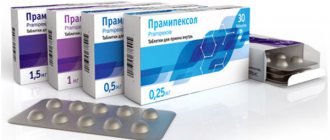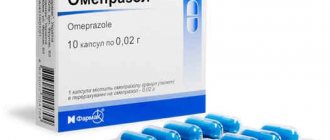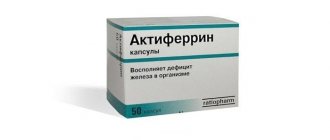- August 5, 2020
- Infectious
- Ulyana Romanova
The drug "Ciprofloxacin" is a well-known antimicrobial agent with a wide spectrum of action. This is a fluoroquinolone derivative, and can be found in pharmacies in the form of tablets, intravenous liquid, eye and ear drops, and ointment. But now we will talk about the Ciprofloxacin solution for infusion.
Composition and price
As you can already understand, the active ingredient is the antibacterial compound of the same name, which is one of the most effective fluoroquinolones on the pharmaceutical market.
For use by dropper, Ciprofloxacin is available in the form of a clear, slightly yellowish solution. 1 ml of such liquid contains 2 mg of active substance. There are also auxiliary elements - injection water, disodium salt EDTA, lactic acid, 0.9 percent sodium chloride solution.
This drug is sold in different volumes. But it is still inexpensive - a 100 ml bottle costs about 30 rubles.
How much does Ciprofloxacin cost?
The average price of Ciprofloxacin in tablets of 500 mg in Ukraine is 22 UAH (package No. 10), the cost of an antibiotic in tablets of 250 mg (package No. 10) is 9-10 UAH. The price of Ciprofloxacin in the form of a solution for infusion therapy is on average 22.5 UAH. The price of an ampoule with eye/ear drops in Kharkov or Kyiv is 17-19 UAH.
In Russian pharmacies the cost of 500 mg tablets is from 33 rubles, 250 mg tablets are from 18 rubles. The solution can be purchased for an average of 35 rubles. The price of Ciprofloxacin eye drops is from 17 rubles.
- Online pharmacies in RussiaRussia
- Online pharmacies in UkraineUkraine
- Online pharmacies in KazakhstanKazakhstan
ZdravCity
- Ciprofloxacin solution for inf.
0.2% fl. 100 ml No. 120 (for hospitals) Limited Liability Partnership “Kelun-Kazpharm” (“ RUR 3,520 order - Ciprofloxacin tablets p.p.o. 500 mg 10 pcs. Ozone LLC
38 rub. order
- Ciprofloxacin-optic eye drops 0.3% dropper bottle 5 ml JSC "LEKKO"
54 RUR order
- Ciprofloxacin tablets p.p.o. 500 mg 10 pcs. Rapharma JSC
62 RUR order
- Ciprofloxacin-AKOS eye drops 0.3% 5ml JSC Sintez
21 rub. order
Pharmacy Dialogue
- Ciprofloxacin (tab.p.pl/vol. 250 mg No. 10) Sintez (Kurgan) OJSC
19 rub. order
- Ciprofloxacin-AKOS (drops 0.3% 5ml) Sintez (Kurgan) OJSC
21 rub. order
- Ciprofloxacin bufus (drops 0.3% 10ml)Update PFC JSC
38 rub. order
- Ciprofloxacin tablets 500 mg No. 10Teva Pharmaceutical
113 RUR order
- Ciprofloxacin (tab.p.pl/vol. 500 mg No. 10) Ozone LLC
41 rub. order
show more
Pharmacy24
- Ciprofloxacin 0.2% 100 ml solution
30 UAH. order - Ciprofloxacin 0.25 No. 10 tablets PrAT "Technolog", Uman, Cherkasy region, Ukraine
15 UAH order
- Ciprofloxacin 200 mg 100 ml No. 1 solution
36 UAH order
- Ciprofloxacin 0.2% 100 ml solution
18 UAH order
- Ciprofloxacin 500 mg No. 10 tablets PrAT "Technolog", Uman, Cherkasy region, Ukraine
30 UAH order
PaniPharmacy
- Ciprofloxacin infusion Ciprofloxacin infusion solution 0.2% 100ml Ukraine, Novofarm-Biosintez LLC
18 UAH order
- Ciprofloxacin infusion Ciprofloxacin infusion solution 0.2% 100ml Ukraine, Yuria-Pharm LLC
37 UAH order
- Ciprofloxacin tablets Ciprofloxacin film-coated tablets 0.25g No. 10 Ukraine, OZ GNTsLS LLC
13 UAH order
- Ciprofloxacin tablets Ciprofloxacin film-coated tablets 0.25g No. 10 Ukraine, Tekhnolog ChAO
17 UAH order
- Ciprofloxacin liquid Ciprofloxacin h/o 0.3% 5ml Ukraine, OZ GNTsLS LLC
31 UAH order
show more
Impact on the body
Ciprofloxacin used through a dropper produces a powerful bactericidal effect. This medication inhibits DNA gyrase of pathogenic microorganisms, which leads to problems with the synthesis of their cellular proteins and replication. Moreover, the substance affects both reproducing bacteria and those that are in the resting phase.
Microorganisms that can be affected by intravenous administration of Ciprofloxacin number in the dozens. But still this medicine is not omnipotent. Staphylococci, some streptococci and enterococci, etc. are moderately resistant to it. There are many types of bacteria.
That is why antibiotic treatment is prescribed after a doctor examines the person’s tests. Only by identifying the causative agent of the disease can effective treatment be considered. A dropper with Ciprofloxacin is not always able to help, and sometimes incorrect therapy can cause harm.
Pharmacokinetics
We also need to talk about how the drug is absorbed by the body. After intravenous infusion at a dose of 400 or 200 mg, the maximum concentration of the substance is reached after 1 hour and is 4.6 μg/ml and 2.1 μg/ml, respectively.
Ciprofloxacin supplied through a dropper binds to plasma proteins by 20-40%. The Vd value is 2-3 l/kg.
The active substance is well distributed throughout the tissues of the body, with the only exception being those that are enriched with fats (nervous tissue, for example). In plasma, for example, its content can be 2-12 times less. But in general, therapeutic concentrations are observed everywhere, namely in the following locations of the body:
- Organs of the pelvis and abdominal cavity.
- Kidneys.
- Saliva.
- Urinary tract.
- Seminal fluid.
- Uterus.
- Tonsils.
- Endometrium.
- Peritoneal fluid.
- Intestines.
- Bile.
- Gallbladder.
- Bone.
- Prostate tissue.
- Ovaries and fallopian tubes.
- Bronchial secretion.
- Lung tissue.
- Muscles.
- Articular cartilage.
- Synovial fluid.
- Leather.
Ciprofloxacin also penetrates in smaller quantities into the lymph, peritoneum, pleura, bronchial secretions, ocular fluid, and also seeps through the placenta. By the way, it is also excreted in breast milk.
The drug is found in low concentrations in the cerebrospinal fluid (6-10%). However, if there is inflammation there, then it increases to 14-37%.
Ciprofloxacin administered intravenously is metabolized in the liver by 15-30%. As a result of this process, substances that are inactive from a pharmacological point of view are formed: formylciprofloxacin, diethylciprofloxacin, oxociprofloxacin and sulfocyprofloxacin.
The half-life lasts 5-6 hours. The substance is excreted through the gastrointestinal tract, and also through tubular secretion and tubular filtration, both in the form of the above metabolites and pure, unchanged.
After the Ciprofloxacin solution for droppers enters the body, during the first two hours its concentration in the urine is 100 times higher than in the serum. It is important to know this, because the indicator significantly exceeds the MIC for many pathogens that affect the urinary tract.
Total and renal clearance rates are 8-10 ml/min/kg and 3-5 ml/min/kg, respectively. You should know that in case of chronic renal failure, the percentage of ciprofloxacin excreted through the paired organ decreases, but accumulation does not occur, since metabolism increases compensatoryly and the drug is excreted through the gastrointestinal tract. But nevertheless, the half-life increases to 12 hours.
Ciprofloxacin during pregnancy
The safety and effectiveness of the drug during pregnancy have not been established.
Animal experiments showed that the drug caused arthropathy . The use of doses exceeding 6 times the average daily dose for humans in pregnant female rats and mice did not provoke any abnormalities in fetal development.
In rabbits receiving 30 and 100 mg/kg Ciprofloxacin orally, gastrointestinal dysfunction was observed and, as a consequence, weight loss and an increase in miscarriage cases. No teratogenic effect was detected.
When the drug was administered into a vein at a dose of 20 mg/kg, there was also no teratogenic effect or toxic effect on the embryo and the mother’s body.
The use of topical Ciprofloxacin during pregnancy is possible if indicated and provided that the benefits to the mother's body outweigh the risks to the fetus.
According to the FDA classification, the drug belongs to category C.
Ciprofloxacin is excreted into milk, so nursing women must decide (taking into account the importance of the drug for the mother) to stop breastfeeding or refuse treatment with Ciprofloxacin.
Local forms are used with caution during lactation, because It is unknown whether the medicine passes into breast milk in this case.
Indications
They also need to be discussed. The main indication for the use of droppers with Ciprofloxacin are infectious and inflammatory pathologies that were provoked by bacteria that this substance can affect. As a rule, such ailments affect the following organs and systems:
- Airways.
- Urinary tract and kidneys.
- Nose, throat, ears.
- Musculoskeletal system.
- Genital organs.
- Biliary tract and gallbladder.
- Digestive system (jaws, teeth, oral cavity are included here).
- Soft tissues, mucous membranes, skin.
Ciprofloxacin solution for intravenous administration can also be prescribed for the treatment of peritonitis, sepsis and postpartum infections. This drug has also demonstrated its effectiveness in preventing infections in people with weakened immune systems.
When to use the medicine
Ciprofloxacin is prescribed for bacterial infections affecting various organs. Indications for use of tablet form and injections:
- inflammation of the lower respiratory tract (bronchitis, pneumonia);
- pathologies of the ENT organs - otitis, sinusitis;
- diseases of bones, joints, muscle tissue;
- pathologies of the genitourinary system (including gonorrhea and prostatitis);
- gynecological diseases, including postpartum infections;
- inflammation of the gastrointestinal tract;
- dental;
- biliary tract.
Treatment with Ciprofloxacin is indicated for complex co-infections with bacterial groups that are resistant to many antibiotics.
What external remedies (drops and ointment) can be used for:
- blepharitis;
- conjunctivitis;
- keratitis;
- chronic dacryocystitis;
- corneal ulcerations;
- post-traumatic treatment;
- prophylaxis before surgery.
Drops in otolaryngology are used in the treatment of otitis media, for instillation into the ear canals.
Contraindications
Before we talk about how to place an IV, we need to list the conditions in which the use of this antibiotic is prohibited. Contraindications can be listed as follows:
- Pregnancy and lactation period.
- Glucose-6-phosphate dehydrogenase deficiency.
- Age up to 18 years (skeleton not yet formed).
- Colitis of pseudomembranous type.
The doctor may prescribe the use of Ciprofloxacin solution for infusion with caution for the following pathologies:
- Liver or kidney failure.
- Severe cerebral atherosclerosis.
- Cerebrovascular accident.
- Epilepsy.
- Convulsive syndrome.
- Mental illnesses.
- Elderly age.
The presence of serious contraindications and dangerous consequences due to ignoring them is another reason why antibiotics are not sold without a prescription.
Dosage
Now we can discuss how to place an IV. The infusion duration should be 30 and 60 minutes when administering 200 and 400 mg, respectively. The antibiotic can be diluted with solutions of the following substances:
- Sodium chloride (0.9%).
- Dextrose (5 or 10%).
- Ringer's solution.
- Fructose (10%).
- A mixture of 5% dextrose solution with sodium chloride (0.45 or 0.225%).
The exact dosage in which a person will be given the antibiotic Ciprofloxacin through a dropper depends on the type of infection, the severity of the disease, weight, age and condition of the body. And also from the condition of the kidneys.
Be that as it may, the single dose is 200 mg in any case. If the condition is severe, then it is increased to 400 mg. The drug is administered twice a day, and treatment lasts 7-14 days. If the doctor considers it necessary, the course can be extended.
There are also situations of emergency treatment. A measured, course of treatment with Ciprofloxacin for cystitis is one thing. Another is quick help for acute gonorrhea, the appearance of which often causes enormous damage to the genitourinary system. With this disease, the patient is given a single dose of 100 mg into a vein, and then a therapeutic regimen is thought out.
If prevention of postoperative infections is planned, then the person is prescribed 200-400 mg 30-60 minutes before the intervention.
People with kidney failure are prescribed half the recommended dose in any case.
Instructions for use
The antibiotic solution is administered intramuscularly and intravenously. The administration regimen and dosage are determined individually depending on the severity of the clinical case.
Dosage regimen and overdose
Ciprofloxacin is administered intravenously in a single dosage of 400 mg over 60 minutes (or 200 mg over 30 minutes) no more than 2 times. Treatment of gonorrhea is a single administration of an antibiotic in the amount of 100 mg. The course of treatment ranges from 5 to 14 days. Protracted infections with a severe course require long-term treatment for up to several months. The antibiotic for infusion administration is diluted with 0.9% solution of sodium chloride, Ringer, glucose.
Exceeding the prescribed amount of the drug leads to an overdose. There are no specific signs, but this condition is manifested by the occurrence of side symptoms, the intensity of which depends on the amount of the drug administered. The most common manifestations of overdose: nausea and vomiting, changes in psycho-emotional state and consciousness, convulsions.
There is no specific antidote. Symptomatic treatment is prescribed. If it is necessary to remove the remaining drug from the body, hemodialysis is performed. After therapy, laboratory values should be monitored.
How to give an injection intramuscularly
The solution must be injected into the femoral or gluteal muscle. To do this, you need to use a special needle - thin and short, designed for intravenous injection.
The injection site must be pre-treated with cotton wool soaked in alcohol. Release the air from the syringe. Place the needle at an angle of 90° relative to the body.
Algorithm for intravenous injection
Ciprofloxacin is administered intravenously in the following sequence:
- Sterile gloves are worn.
- The bend of the elbow is wiped with cotton wool soaked in alcohol. Using a new cotton pad, separately wipe the area with the vein into which the needle will be inserted.
- A tourniquet is applied.
- A needle is inserted into the prepared vein. If blood appears above the skin at the time of injection, a sterile napkin is applied.
- After inserting the needle, the tourniquet is removed.
- The dropper system is connected to the needle, after which the clamp opens.
Ciprofloxacin (drip) is given only in a hospital setting. Empty ampoules are subject to mandatory disposal.
Possible complications and side effects
The antibacterial agent is well tolerated, but due to the individual characteristics of the body, the risk of a number of side effects cannot be excluded:
- Musculoskeletal system: myalgia.
- Digestive system: attacks of nausea and vomiting, dry mouth, development of hepatitis, pain in the abdomen.
- Genitourinary system: cystitis, difficulty urinating.
- Respiratory system: pulmonary embolism, bronchospasm.
- Sense organs: changes in taste perception, decreased visual acuity and hearing. In rare cases, there is a change or decrease in the sense of smell.
- Central nervous system: attacks of dizziness, headaches, ringing in the ears, hallucinations, disturbances of consciousness.
- Allergic manifestations: itching of the skin, urticaria, rarely - angioedema, anaphylactic reactions.
Other possible side effects:
- feeling of flushing in the face;
- the appearance of painful sensations that do not have a specific etiology;
- development of superinfections;
- the appearance of pseudomembranous colitis.
Intense adverse reactions require discontinuation of the antibiotic.
Adverse reactions
So, why droppers with Ciprofloxacin are prescribed in gynecology, urology and other areas is clear. Now it is worth discussing what undesirable effects a person will have to face if he decides to ignore medical recommendations and start using an antibiotic not in accordance with the instructions. Adverse reactions can be identified in the following list:
- Sense organs: hearing loss, diplopia, tinnitus, problems with vision, smell, taste, and color perception.
- CNS and PNS: headache, dizziness, excessive fatigue, tremor, anxiety, cerebral artery thrombosis, insomnia, peripheral paraalgesia, nightmares, high blood pressure, sweating, confusion, hallucinations, fainting, migraine, psychotic reactions, cerebral artery thrombosis.
- Hematopoietic system: hemolytic anemia, leukopenia, thrombocytosis, granulocytopenia, leukocytosis, thrombocytopenia, anemia.
- Gastrointestinal tract: nausea, vomiting, diarrhea, abdominal pain, hepatitis, flatulence, hepatonecrosis, cholestatic jaundice, development of anorexia.
- Musculoskeletal system: myalgia, arthralgia, tendon ruptures, arthritis, tenosynovitis.
- Cardiovascular system: hot flashes, decreased blood pressure, heart rhythm disturbances, tachycardia.
- Urinary system: interstitial type nephritis, hematuria, decreased nitrogen excretory renal function, crystalluria, urethral bleeding, glomerulonephritis, albuminuria, urinary retention, polyuria and dysuria.
- Laboratory indicators: hyperglycemia, hyperbilirubinemia, hypoprothrombinemia, hypercreatininemia, increased activity of alkaline phosphatase and transaminases in the liver.
- Allergic reactions: toxic epidermal necrolysis, pruritus, Stevens-Johnson syndrome, urticaria, exudative erythema multiforme, blisters with bleeding, vasculitis, papules (with scabs as a consequence), erythema nodosum, fever, increased sensitivity to light, eosinophilia, shortness of breath, swelling of the larynx and face, petechiae.
- Other: superinfection (colitis of pseudomembranous type, candidiasis), weakness, phlebitis, burning and area at the injection site.
In general, there can be many side effects from a dropper with Ciprofloxacin. Even if they are rare, and patients tolerate the drug well, every person should still be warned about them.
Ciprofloxacin - solution
Severe infections, staphylococcal infections and infections caused by gram-positive and anaerobic bacteria Ciprofloxacin monotherapy is not an appropriate treatment for severe infections, including suspected infections caused by gram-positive and/or anaerobic microorganisms. In such cases, it is necessary to prescribe appropriate antibacterial drugs.
Infections caused by Streptococcus pneumonia Ciprofloxacin is not the drug of choice for suspected or established pneumonia caused by Streptococcus pneumonia.
Genital tract infections When treating patients with epididymo-orchitis and pelvic inflammatory diseases, it should be taken into account that these infections can be caused by strains of Neisseria gonorrhoeae that are resistant to fluoroquinolones. Empirical prescription of ciprofloxacin for the treatment of such patients is possible only in combination with other antibacterial drugs active against this pathogen (for example, cephalosporins). If there is no clinical improvement in the patient's condition during ciprofloxacin therapy within 3 days, therapy should be changed.
Urinary tract infections Local data on fluoroquinolone resistance in Escherichia coli (the most common causative agent of urinary tract infections) should be taken into account.
Abdominal infections To date, data on the effectiveness of ciprofloxacin for the treatment of patients with postoperative abdominal infections are limited.
Travelers' diarrhea Before prescribing the drug, data on the prevalence of fluoroquinolone resistance in the countries visited by the patient before developing the disease should be taken into account.
Infections of bones and joints When treating infections of this location, ciprofloxacin should be prescribed in combination with other antibacterial drugs, taking into account the results of microbiological studies.
Pulmonary anthrax Data on the effectiveness of the drug ciprofloxacin in the treatment of this disease are based mainly on data on the sensitivity of microorganisms in in vitro and animal experiments. Data on the use of the drug to treat the disease in humans are limited; national or international guidelines should be consulted.
Risk of developing superinfection During or after completion of treatment with ciprofloxacin, excessive growth of strains of resistant microorganisms is possible, including without clinical signs of superinfection.
Resistance During or after completion of treatment with ciprofloxacin, excessive growth of strains of resistant microorganisms is possible, including without clinical signs of superinfection. The risk of the emergence of resistant strains is especially high in the case of long courses of therapy, treatment of nosocomial (nosocomial) infections and/or in the case of infections caused by Staphylococcus spp. and Pseudomonas spp.
Central nervous system disorders: Cases of sensory and sensorimotor axonal polyneuropathy affecting small and/or large axons and leading to paresthesia, hypoesthesia, dysesthesia and weakness have been reported in patients using fluoroquinolones, including ciprofloxacin. Symptoms may appear soon after starting use and may be irreversible. If the patient develops symptoms of neuropathy, including pain, burning, tingling, numbness and/or weakness, or other sensory disturbances, including tactile, pain, temperature, vibration and position sense, ciprofloxacin should be discontinued immediately.
Ciprofloxacin, like other fluoroquinolones, can lower the seizure threshold and provoke the development of seizures up to the development of status epilepticus. In patients with epilepsy who have had CNS diseases (for example, a decrease in the seizure threshold, a history of seizures, cerebrovascular accidents, organic brain lesions or stroke), due to the risk of developing adverse reactions from the CNS, ciprofloxacin preparations should be used only in cases when the expected clinical effect exceeds the possible risk of developing a side effect of the drug. If seizures occur, the drug should be discontinued.
Impaired renal and urinary function Since ciprofloxacin is excreted primarily by the kidneys, dose adjustment of the drug is necessary in patients with impaired renal function. Cases of crystalluria have been reported with the use of ciprofloxacin. To avoid the development of crystalluria, it is unacceptable to exceed the recommended daily dose; sufficient fluid intake and maintaining an acidic urine reaction are also necessary.
Liver dysfunction: Cases of liver necrosis and life-threatening liver failure have been reported with the use of ciprofloxacin. If symptoms of liver disease such as anorexia, jaundice, dark urine, itching, abdominal tenderness are present, ciprofloxacin should be discontinued. Patients taking ciprofloxacin who have had liver disease may experience a temporary increase in liver transaminases, alkaline phosphatase, or cholestatic jaundice.
Disorders of the musculoskeletal system When using ciprofloxacin, cases of tendinitis and tendon rupture (mainly the Achilles tendon), sometimes bilateral, may occur within the first 48 hours after the start of therapy. Inflammation and rupture of the tendon may occur even several months after stopping treatment with ciprofloxacin. There is an increased risk of tendinopathy in elderly patients and in patients with tendon diseases who are concomitantly treated with corticosteroids. At the first signs of tendonitis (painful swelling in the joint area, inflammation), ciprofloxacin should be discontinued, physical activity should be avoided, as there is a risk of tendon rupture, and a doctor should be consulted. Ciprofloxacin should be used with caution in patients with a history of tendon diseases associated with quinolones.
Hypersensitivity Sometimes, after taking the first dose of ciprofloxacin, hypersensitivity to the drug, including allergic reactions, may develop, which should be reported to your doctor immediately. In rare cases, after the first use, anaphylactic reactions up to anaphylactic shock may occur. In these cases, the use of ciprofloxacin should be stopped immediately and appropriate treatment should be instituted.
Local reactions When ciprofloxacin is administered intravenously, a local inflammatory reaction may occur at the site of drug administration (swelling, pain). This reaction is more common if the infusion time is 30 minutes or less. The reaction quickly passes after the end of the infusion and is not a contraindication for subsequent administration of the drug, unless its course is complicated.
Diagnosis of tuberculosis In vitro, ciprofloxacin may interfere with the bacteriological study of Mucobacterium tuberculosis, inhibiting its growth, which can lead to false negative results when diagnosing this pathogen in patients taking ciprofloxacin.
Glucose-6-phosphate dehydrogenase (G-6-PDH) deficiency Hemolytic reactions have been reported in patients with G-6-PDG deficiency receiving ciprofloxacin. Prescribing ciprofloxacin to this category of patients is possible only when the potential benefits of the drug outweigh the possible risks. Careful monitoring of the patient's condition is necessary.
Hypoglycemia As with other fluoroquinolones, when using ciprofloxacin it is possible to reduce the concentration of glucose in the blood plasma, mainly in patients with diabetes, especially the elderly. When prescribing ciprofloxacin to patients with diabetes mellitus, it is necessary to carefully monitor the concentration of glucose in the blood plasma.
Use of the drug in children and adolescents It has been found that ciprofloxacin, like other drugs of this class, causes arthropathy of large joints in animals. When analyzing the current data on the safety of ciprofloxacin in children under 18 years of age, most of whom have cystic fibrosis, no connection was established between cartilage or joint damage and taking the drug. Ciprofloxacin should be prescribed to children and adolescents in strict accordance with the recommendations for the treatment of patients in this age category. For patients with cystic fibrosis, the drug should be prescribed by specialists who have experience in treating children with this pathology. The use of ciprofloxacin in children is not recommended for the treatment of diseases other than complications of cystic fibrosis (in children 5 to 17 years of age) associated with Pseudomonas aeruginosa and for the treatment and prevention of pulmonary anthrax (after suspected or proven infection with Bacillus anthracis). Due to the risk of developing undesirable effects on bones and joints, the drug should be prescribed to children only after a careful assessment of the potential benefits and risks of therapy.
Cardiac disorders Ciprofloxacin has the effect of prolonging the QT interval. Given that women have a longer average QT interval compared to men, they are more sensitive to drugs that cause QT prolongation. Elderly patients also have increased sensitivity to the effects of drugs that prolong the QT interval.
Ciprofloxacin should be used with caution in combination with drugs that prolong the QT interval (e.g., class IA and III antiarrhythmic drugs, tricyclic antidepressants, macrolides, antipsychotics) in patients with an increased risk of QT prolongation or development of arrhythmias (e.g., congenital long interval syndrome). QT, cardiac disease (heart failure, myocardial infarction, bradycardia), electrolyte imbalance (eg, hypokalemia, hypomagnesemia)).
Gastrointestinal tract If severe and prolonged diarrhea occurs during or after treatment with ciprofloxacin, the diagnosis of pseudomembranous colitis should be excluded, which requires immediate discontinuation of the drug and the appointment of appropriate treatment. The use of drugs that inhibit intestinal motility is contraindicated.
Skin During treatment, UV irradiation (including contact with direct sunlight) should be avoided. Treatment should be discontinued if photosensitivity reactions are observed (for example, if changes in the skin appear that resemble sunburn).
Cytochrome P450 Ciprofloxacin is a moderate inhibitor of CYP450 1A2 isoenzymes. Caution should be exercised during the simultaneous use of ciprofloxacin and drugs metabolized by these enzymes (including theophylline, methylxanthine, caffeine, duloxetine, clozapine, ropinirole, olanzapine), since the increase in the concentration of these drugs in the blood serum, due to inhibition of their metabolism by ciprofloxacin, may cause specific adverse reactions.
The combined use of ciprofloxacin and tizanidine is contraindicated.
Sodium chloride content The sodium chloride content of ciprofloxacin solution should be taken into account when treating patients whose sodium intake is limited (heart failure, renal failure, nephrotic syndrome).
With the simultaneous intravenous administration of ciprofloxacin and drugs for general anesthesia from the group of barbituric acid derivatives, constant monitoring of heart rate, blood pressure, and electrocardiogram is necessary.
In patients with myasthenia gravis gravis, ciprofloxacin should be used with caution as it may worsen symptoms.
During long-term therapy with ciprofloxacin, it is recommended to regularly monitor complete blood counts, kidney and liver function.
Overdose
As you can already understand, the drug under discussion is a serious, toxic substance. And even though the lethal dose of this medication has not been established, it is still possible to be poisoned by it, and there have been such cases. That is why in no case should you voluntarily prescribe Ciprofloxacin for cystitis or another disease, even if you somehow managed to get it.
For example, in clinical practice there is a case where a 33-year-old man took as much as 18.75 grams of this substance. As a result, he quickly developed tubular necrosis and gastric ulceration. On the fourth day, serum creatinine levels increased. It was also possible to find out that when taking more than 14 g, acute renal failure develops.
Ciprofloxacin does not have a specific antidote. Treatment involves dialysis, emergency care, providing sufficient fluids and subsequent monitoring of the patient's condition.
Release forms
The antibiotic ciprofloxacin has a wide range of uses and is therefore available in different forms. Based on the active substance (fluoroquinolone), there is an impressive list of analogues, which have the following names: “Tsiprolet”, “Tsipraz”, “Cipralone”, “Mikroflokos”, “Ciproxin”, “Tsiprobay”, “Ificipro”, “Ciprofan”, “ Ciproflox,” etc. Based on the location of the infection and the degree of severity, the following forms of medication can be prescribed:
- ointment;
- drop for eyes and ears;
- coated tablets;
- ampoules for injections;
- solution for infusion.
Pills
The most popular form of the antibiotic Ciprofloxacin is tablets. This is due to the ease of storage, transportation and reception of the product. Unlike intramuscular or intravenous injections of the drug, the risk of complications is significantly lower. Moreover, the tablets are not inferior in effectiveness to ampoules. It is preferable to use this form of medication for intestinal diseases, which will ensure rapid access of the treatment substance to the site of infection. The coating of the drug is designed to protect gastric juice during absorption.
Eye and ear drops
Another popular form of the antibiotic ciprofloxacin is drops. Used if the inflammatory or purulent process is in the eye or ears. Drops are produced in the form of a solution with 0.3% of the active substance. The drug has a yellow or yellow-green color, with the presence of ciprofloxacin hydrochloride in an amount of 3 g. The drug is prescribed for the following diseases:
- blepharitis;
- corneal ulcer;
- chronic eye diseases;
- bacterial conjunctivitis;
- complications after ophthalmic surgery.
Solution for infusion
For intravenous injections of the drug, an infusion solution is used. Externally, the product looks like a suspension, which is prescribed to children for oral use. The solution has a clear, slightly green or yellow tint. The medication is administered to the patient using a dropper over 30 minutes in the amount of 200 mg and 60 minutes - 400 mg. This method of drug administration is used for almost any type of infectious disease.
Ointment
This dosage form of the antibiotic ciprofloxacin is typically used to treat eye diseases. It is placed in small quantities under the lower eyelid several times a day. For infectious skin lesions, the product is applied once to the affected area, 1 g or as a compression bandage. The duration of use of the medication is determined by the attending physician, based on the severity of the patient’s condition, the extent of the lesion, and the rate of tissue regeneration.
Ampoules for injections
For ease of storage of the drug, it is produced in the form of ampoules with a solution, which is used for drip infusion or injections. The dosage of the medication depends on the disease, for example, 200-400 mg is prescribed for people with damage to bones and joints, urogenital infections, and damage to the ENT organs. If the intra-abdominal area, respiratory tract, and soft skin tissues are affected, the single dose is 400 mg.
Drug interactions
Having discussed the instructions for use, the price of Ciprofloxacin, as well as many other features of the drug, you need to talk about what reactions it enters into with other medications. An antibiotic can interact with various medications, and here are the most well-known reactions:
- Under the influence of ciprofloxacin, the activity of microsomal oxidation occurring in hepatocytes decreases.
- Because of this substance, the half-life of caffeine, theophylline and xanthines in general is prolonged. The same applies to indirect anticoagulants and oral hypoglycemic agents. Ciprofloxacin also leads to a decrease in the prothrombin index.
- If you combine this remedy with other antimicrobial medications, synergism may occur. Therefore, it is often combined with ceftazidime, azlocillin, mezlocillin, etc.
- Under the influence of uricosuric drugs, the concentration of ciprofloxacin increases, and the drug itself is eliminated from the body more slowly.
- Combining this antibiotic with NSAIDs increases the risk of seizures.
- Metoclopramide may accelerate the absorption of ciprofloxacin. As a result, the time during which the maximum concentration of the second is usually achieved is reduced.
- Cyclosporine toxicity due to ciprofloxacin may be increased in the same way as serum creatinine. In order for such a specific treatment to take place without consequences, you need to check this indicator at least twice a week.
- The effect of indirect anticoagulants is enhanced by ciprofloxacin.
You also need to remember that the infusion solution is incompatible with any other liquids that are unstable in an acidic environment. Therefore, mixing it with substances with a pH above 7 is strictly prohibited.
Ciprofloxacin analogs
Level 4 ATC code matches:
Norfloxacin
Synonyms: Ciprofloxacin-Teva , Basijen , Ciprofloxacin-FPO , Ificipro , Ciprofloxacin-Promed , Procipro , Ciprofloxacin-AKOS , Tsiprinol , Ciprodox , Cifran , Ecotsifol , Tseprova .
Analogues of Ciprofloxacin with a similar mechanism of action: Abaktal , Gatispan , Zanotsin , Ivacin , Levotek , Levofloxacin , Moximac , Nolitsin , Ofloxacin , Oflocid , Pefloxacin , Eleflox .
Important instructions
After discussing the indications, side effects, price and instructions for use of Ciprofloxacin, it is worth listing some important nuances, namely:
- Before starting treatment, it is necessary to exclude the possibility that the patient has pseudomembranous colitis.
- If pain in the tendons occurs, you should immediately report it to your doctor and stop therapy. The same applies to the occurrence of the first signs of tenosynovitis.
- During therapy you need to drink plenty of free fluids.
- It is important to avoid contact with direct sunlight while undergoing treatment.
- If a person is not being treated in a hospital and moves freely, then he should think through the nuances regarding transport. Ciprofloxacin can impair the speed of psychomotor reactions and attentiveness, and therefore you should not drive after using it. Engaging in any potentially dangerous activities is the same.
- If a nursing woman is prescribed IVs with an antibiotic without fail, then she will have to switch the baby to artificial formula.
- When treatment is prescribed to older people, they are placed under medical supervision in order to monitor the body’s reaction to such a serious drug.
If a person administers IVs to himself (according to medical instructions, of course), then he needs to store the solution correctly. It is important to put it in a dark place where the temperature is from 5 to 20 °C. Children or animals must not have access to it. The composition cannot be frozen, but can be stored for two years.
For what pathologies is it prescribed?
pathogenic Use of ciprofloxacin
| Name of the disease | Mechanism of action | Dose |
| Respiratory diseases | ||
| Acute or chronic bronchitis | It disrupts the DNA helixization of pathogenic microorganisms, which completely inhibits their growth and reproduction. Leads to significant changes in the cell wall and membrane of microbes, causing their further destruction. | Twice a day, 500–750 milligrams. The duration of treatment, as a rule, is from 7 to 14 days (depending on the severity of the pathology). |
| Pneumonia | ||
| Bronchiectasis (chronic suppurative disease of the bronchi) | ||
| Pulmonary form of cystic fibrosis (hereditary disease affecting the bronchial glands) | Selected individually. | |
| Diseases of the ENT organs | ||
| Pharyngitis (inflammation of the pharyngeal tissue) | Same. | 500 – 750 milligrams twice a day. |
| Frontitis (inflammation of the frontal sinuses) | ||
| Sinusitis (inflammation of the maxillary sinuses) | ||
| Mastoiditis (inflammation of the mastoid process of the temporal bone) | ||
| Tonsillitis or sore throat | ||
| Otitis media (inflammation of the middle ear) | ||
| Malignant otitis externa (damage to the cartilage of the external ear up to necrosis) | Same. | Twice a day, 750 milligrams. The course of treatment is selected by an ENT doctor and can last more than a month. |
| Bacterial infections of the digestive tract | ||
| Cholecystitis (inflammation of the gallbladder) | Same. | 250 - 500 milligrams twice a day. The course of treatment ranges from 5 to 15 days. |
| Salmonellosis (intestinal infection caused by salmonella) | ||
| Yersiniosis (an intestinal infection that subsequently affects the liver, spleen and other organs) | ||
| Campylobacteriosis (intestinal disease with generalization of the process and intoxication syndrome) | ||
| Typhoid fever (an infection characterized by general intoxication, roseola rash, and enlarged spleen and liver) | 500 milligrams twice a day. The duration of treatment is 1 week. | |
| Dysentery (intestinal infection caused by Shigella) | 500 milligrams twice a day. Treatment lasts 3 or 4 days. | |
| Cholera | 500 milligrams twice a day for 3 days. | |
| Peritonitis (inflammation of the peritoneum with severe general condition) | In the amount of 500 milligrams 4 times a day or 50 milligrams per 1 liter of dialysate intraperitoneally (a substance without suspended particles that is used for intraperitoneal administration). | |
| Intra-abdominal abscesses (intra-abdominal suppurative inflammation of tissues) | 250 - 500 milligrams. Twice a day for 7 – 15 days. | |
| Infections of the genitourinary system | ||
| Pelvioperitonitis (inflammation of the peritoneum, which is limited to the pelvic area) | Same. | In the amount of 500 milligrams four times a day or 50 milligrams per 1 liter of dialysate intraperitoneally. |
| Oophoritis (inflammation of the ovaries) | 500 – 750 milligrams 2 times a day. The duration of treatment should be at least 14 days. | |
| Salpingitis (inflammation of the fallopian tubes) | ||
| Adnexitis (inflammation of the ovaries and fallopian tubes) | ||
| Endometritis (inflammation of the surface layer of the endometrium of the uterus) | ||
| Prostatitis (inflammation of the prostate gland) | 500 – 750 milligrams twice a day. The duration of treatment for acute prostatitis is 14–28 days, and for chronic prostatitis – 4–6 weeks. | |
| Uncomplicated cystitis (inflammation of the bladder mucosa) | Take 500 milligrams once. | |
| Gonorrhea | ||
| Chlamydia (one of the most common sexually transmitted diseases) | For uncomplicated forms of chlamydia, 500 milligrams are prescribed, and for complicated forms, 750 milligrams twice a day for 10 to 14 days. It is also possible to use the drug intravenously at a dosage of 400 milligrams every 12 hours (the same duration of treatment). | |
| Chancroid (a sexually transmitted infection found mainly in the Americas and Africa) | Individually. | |
| Infections of soft tissues and skin | ||
| Burns | Same. | 250 - 500 milligrams twice a day. The course of treatment is 7 – 15 days. |
| Abscess (localized purulent process with the formation of a purulent cavity) | ||
| Phlegmon (diffused purulent inflammation of soft tissues without definite and clear boundaries) | ||
| Infected ulcers | ||
| Infectious processes of bone tissue and joints | ||
| Osteomyelitis (purulent-necrotic inflammation of bone and bone marrow tissue) | Same. | 250 - 500 milliliters twice a day. The duration of treatment is from 7 days to 2 months. |
| Septic arthritis (infectious joint inflammation) | ||
| Other states | ||
| Infections due to decreased immunity (immunodeficiency) | Same. | 500 – 750 milligrams twice a day for the entire period of neutropenia (decrease in the number of white blood cells). |
| Prevention and therapy for pulmonary anthrax | In an amount of 500 milligrams. |









